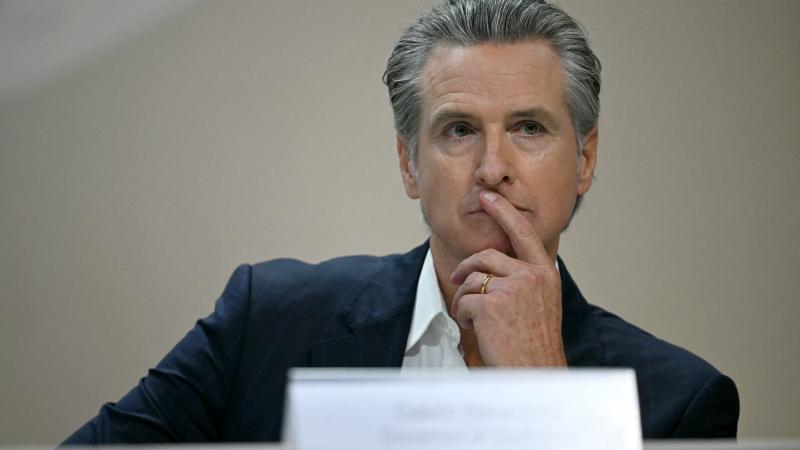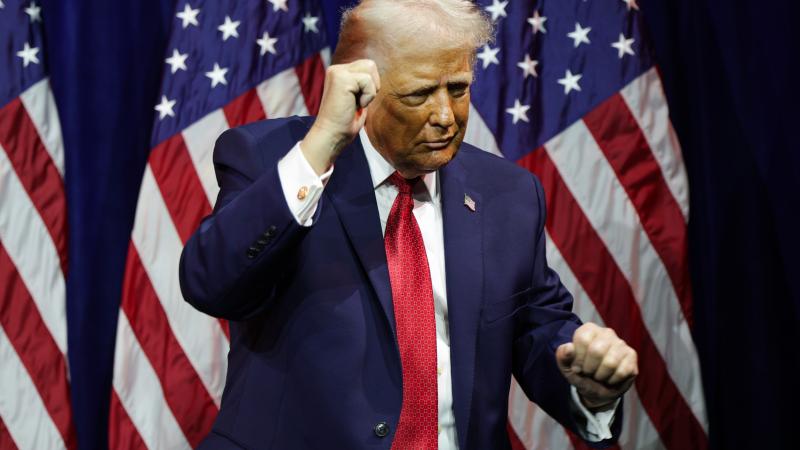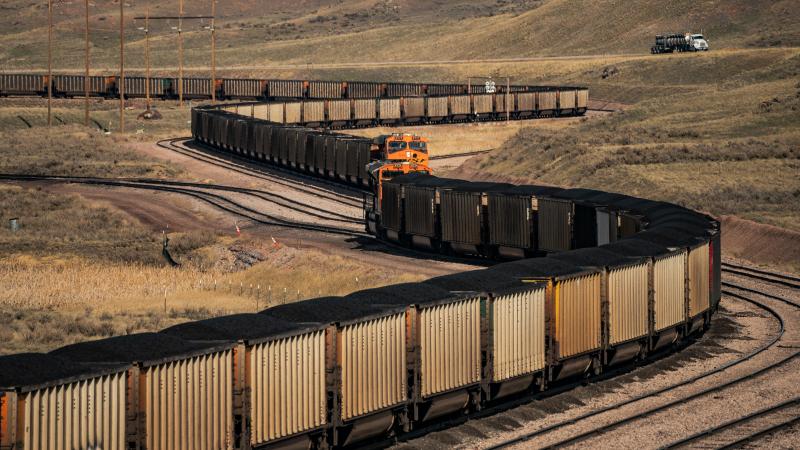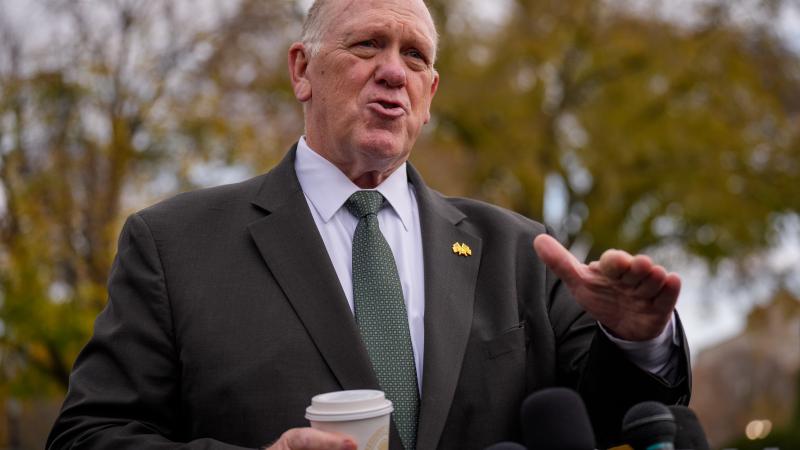Energy Department claims strategic oil reserve refill prices good for taxpayers, industry disagrees
An industry spokesperson compared the DOE’s recent purchases to a teenage son, granted use of the family car, bringing it home with the tank half empty. Then, he tells you it's okay because he’s going to put a gallon in today and another one tomorrow. It will take 75 months to bring the nation's petroleum reserves back to the level it was before Biden began draining it.
The U.S. Department of Energy (DOE) announced Wednesday another request to buy 3 million barrels of oil that will help replenish the nation’s energy stockpiles, which have been drained under President Joe Biden to their lowest level since the 1980s.
The agency has been doing these monthly buys. In the announcements, the DOE highlighting that, since it’s buying the oil at less than it was sold in the past couple of years, it’s a good deal for taxpayers.
Tim Stewart, president of the U.S. Oil and Gas Association, told Just The News that it’s not such a good deal when you look at the historic average price of what the oil was originally purchased at, which was less than half what the DOE is buying it for now.
History
The Strategic Petroleum Reserve (SPR) as the reserves are called, was created in response to the 1973 OPEC oil embargo against the United States, which triggered an energy crisis and caused a recession. President Gerald Ford signed the Energy Policy and Conservation Act of 1975, which created the SPR to provide a stockpile of energy supplies should the nation need it. These crude oil reserves are stored in 60 salt caverns that are 200 feet wide and over 2,500 deep in the ground.
The reserves have been tapped for a variety of reasons over the years, and some of the oil was released for exchange agreements, which function like a loan. The loan is given in barrels of oil, and those barrels are repaid at a specific date with interest.
The main purpose of the SPR was as an emergency response tool the president could use in the face of an economically threatening disruption in oil supplies, and there were three times it was tapped for that purpose.
During Operation Desert Storm in 1991, the federal government was prepared to release 34 million barrels from the SPR, but only about half of that was released over a 45-day period. The industry offers for the high-sulfur “sour” crude oil were substantially lower than bids for the lower-sulfur “sweet” crude.
In 2005, Hurricane Katrina caused massive damage to oil production facilities, terminals, pipelines and refineries, effectively shutting down 25% of domestic production. The total release, including emergency loans, was nearly 21 million barrels. In 2011, in response to the Libyan civil war disrupting oil supplies, 60 million barrels were released onto the world market.
President Joe Biden began tapping the SPR in spring of 2022 to try to drive down gasoline prices, which were hitting Americans during a time of rising inflation in the wake of the pandemic. The midterm elections were on the horizon, and voters were not happy with what they were paying at the pump.
Big drain
Between March 2022 and August 2023, Biden released over 225 million barrels of oil from the SPR.
During the last months of 2023, the DOE purchased 13.83 million barrels of oil in a bid to refill the SPR. The oil was, according to the DOE, purchased at an average price of $77.31 per barrel, which is below the average of $95 per barrel the crude oil was sold at in 2022.
The latest solicitation, the DOE stated, “is a continuation of DOE’s strategy of consistent solicitations aimed at purchasing oil when it can be purchased at a good deal for taxpayers.” Assuming the federal government continues monthly buys of 3 million barrels, it will take 75 months to bring it back to the level at which it was before Biden began draining it.
Tim Stewart, president of the U.S. Oil and Gas Association, said that, contrary to the DOE’s claims that it’s getting a good deal for taxpayers, the average price paid per barrel in the SPR has been $29.70 per barrel.
“We are purchasing refill barrels at twice the historic average. Yes, it comes at a cost,” Stewart said.
He said it’s better to put out purchase orders at $75 per barrel instead of $95, if you have suppliers willing to meet that price, but the federal government needs to buy a lot of oil to refill the SPR to the levels it was at.
Stewart also said that President Donald Trump had included $3 billion in funding for oil purchases in the pandemic stimulus package.
At that time, with the pandemic lockdowns killing global demand, West Texas Intermediate oil prices, considered a U.S. benchmark price for crude oil, were under $25 per barrel. Trump had hoped to top off the SPR while the prices were low. Democrats in Congress killed the funding for the project. In an email to senators after the bill’s passage, Sen Chuck Schumer, D-N.Y., who was Senate Minority Leader at the time, boasted that the revised version of the bill “eliminated a $3 billion bailout for big oil.”
Damage Control
“They could have picked up several hundred million barrels at $15, but because it was what President Trump wanted, Congress said no,” Stewart said. He added that if Congress would have funded the project, Biden’s 225 million-barrel drawdown wouldn’t have been so noticeable.
In each of the 3-million barrel purchases over the past few months, the DOE has sent out announcements highlighting that the oil is being purchased at less than it was sold.
Stewart said that the Biden administration, which never expected anyone would take much notice of the declining energy stockpiles, is doing damage control ahead of the election. “Of the many political weak spots in the Biden Administration energy policies, the most interesting one to me is their political miscalculation of the SPR. Prior to 2022, the average person knew nothing about the SPR. That has completely changed. When the lovely 75-year-old blue-haired lady at church complains to me how Biden has drained the SPR – they must have caught the public’s attention,” Stewart said.
He compared the DOE’s recent purchases to a teenage son, granted use of the family car, bringing it home with the tank half empty. Then, he tells you it's okay because he’s going to put a gallon in today and another one tomorrow.
“That is how the voters see the Biden Administration’s management of the SPR,” Stewart said.
The Facts Inside Our Reporter's Notebook
Links
- announced Wednesday another request to buy 3 million barrels of oil
- The Strategic Petroleum Reserve
- was created in response to the 1973 OPEC oil embargo
- variety of reasons over the years
- Operation Desert Storm in 1991
- Hurricane Katrina caused massive damage to oil production facilities
- Libyan civil war disrupting oil supplies
- voters were not happy with what they were paying at the pump
- purchased 13.83 million barrels of oil in a bid to refill the SPR
- included $3 billion in funding for oil purchases in the pandemic stimulus package
- killed the funding for the project
















